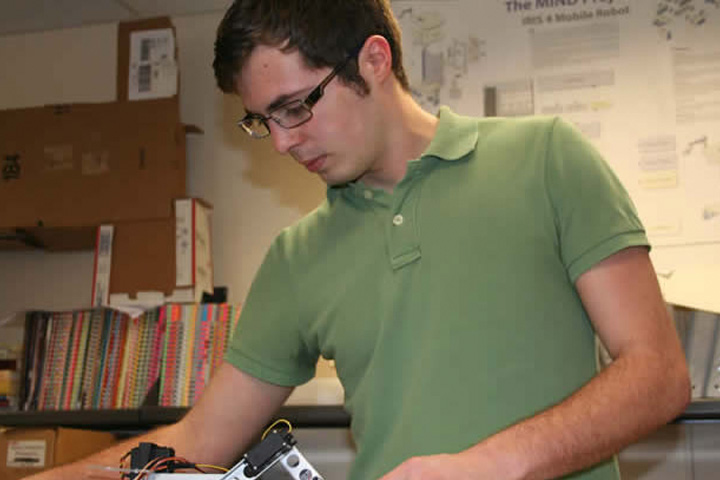For thousands of years, it was the role of philosophers and theologians to ponder, “What is the mind?”
Only in the last century has that quest evolved into a science – cognitive science, which reaches into a vast number of academic fields.
“Cognitive science is very interdisciplinary. We are trying to understand the mind, human cognition and the nature of it,” said David Anderson, director of the minor in cognitive science at Illinois State.
He noted the science touches everyone from psychologists who study behavior and neurologists who examine the biochemistry of the brain, to linguists exploring how the brain deciphers language and computer scientists who delve into the world of artificial intelligence.
“When you are teaching an introduction to cognitive science, what would be ideal is to have five or six instructors from different fields explaining the various methodologies they use, but that is not feasible,” he said.
Anderson is the director and one of the founders of The Mind Project, a nearly $2 million grant-funded research effort to create curriculum for cognitive science instructors. The project, housed on a server at Illinois State, is centered on creating online curriculum content that includes virtual labs, videos, handouts and whatever a teacher might need to explore cognitive science.
 “We have so many methodologies that may end up making claims about the very same features of the mind,” said Anderson.“To teach all those, we can give students textbooks and have them read descriptions, or we can go beyond that, and give them a feel of what it is like to be a cognitive psychologist or cognitive anthropologist.”
“We have so many methodologies that may end up making claims about the very same features of the mind,” said Anderson.“To teach all those, we can give students textbooks and have them read descriptions, or we can go beyond that, and give them a feel of what it is like to be a cognitive psychologist or cognitive anthropologist.”
For the last 12 years, faculty from all over campus and across the country have been assisting in the development of the project, developing virtual labs to be used by advanced high school students and early level college students. The labs, which can last 40 to 90 minutes with accompanying lessons and video, are designed for varying levels of equipment. “If teachers want to actually build a physical robotic arm while exploring artificial intelligence, we have curriculum for that. If an instructor wants students to build a virtual arm in a virtual lab, we have that as well,” he said.
The online labs place students in control of the experiments. A lab designed by Professor of Biology Paul Garris allows students to perform experiments on virtual rats. Students can test theories offering competing explanations for why Parkinson’s disease behaves the way it does. “Students surgically implant electrodes into virtual rats and measure dopamine levels,” Anderson said. Another lab, designed by Professor of Anthropology James Stanlaw, allows students to pose questions to virtual participants from different cultures to learn about what color terms they have in their language, offering clues to how the brain processes color information. “Is it all culturally relative, or is there something in the brain that privileges certain colors?” Anderson asked.
The Mind Project does more than offer a place to construct virtual robots, or run virtual mice around a maze, it teaches a level of critical thinking. “After working on a project, students can see a set of data differently,” Anderson said. “They can look and say, ‘Are these conclusions really justified based on the data?’ Students will have gathered data, done the experiment – even in a simulation – rather than just read a book without understanding how the work is done.”
The first phase of The Mind Project, sponsored by grants from the National Institutes of Health and the National Science Foundation, focused on creating the Mind Project website. The next phase will be to begin to promote the site for use around the country.
Developing The Mind Project has been no easy task, but that isn’t surprising with the nature of the subject. “When talking about the mind, our understanding is still in its infancy,” Anderson said. “In many ways, we know more about distant corners of the galaxy than we know about how the mind really works.”

